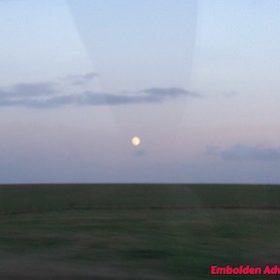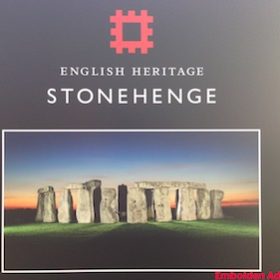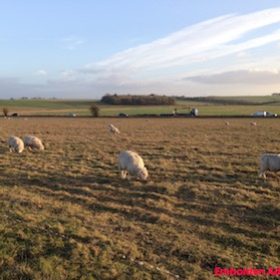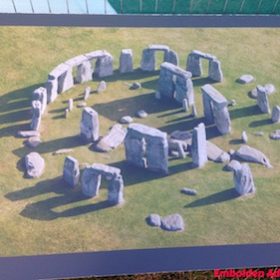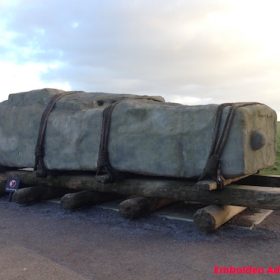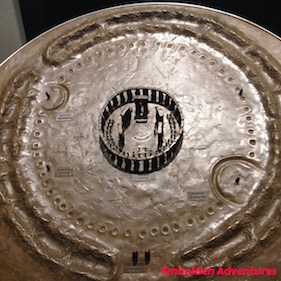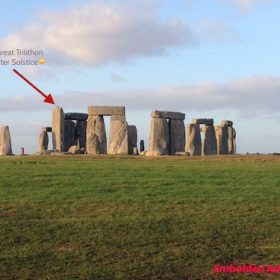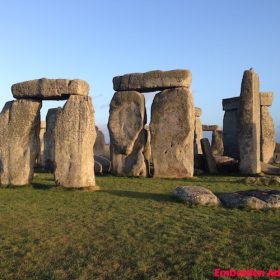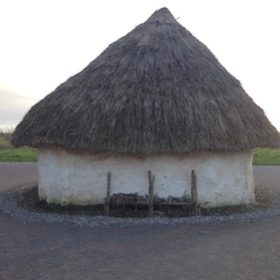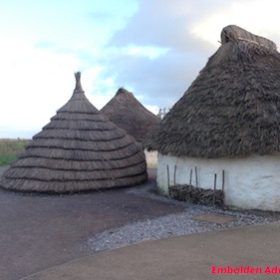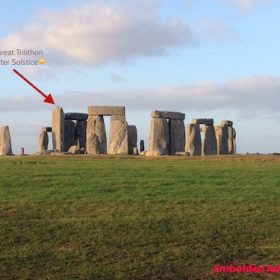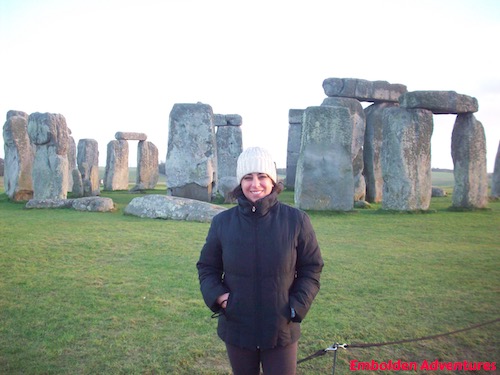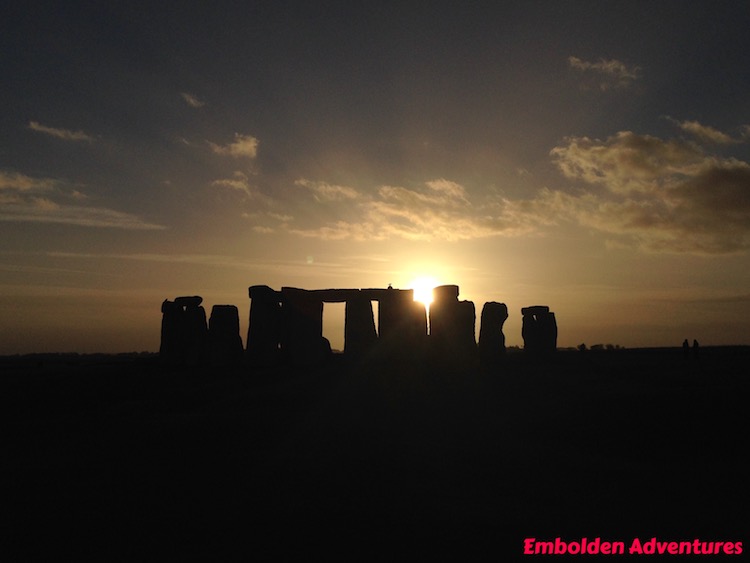Stonehenge is as ancient as the Egyptian pyramids yet more mysterious. Uncover some of this megalithic monument’s long-held secrets and see how it all plays together:
- Synchronicity and more synchronicity
- A wizard, a giant, a Roman, a Druid, Spinal Tap, and a Neolithic man
- Building blocks like Legos
- The New York City and Stonehenge connection
- …and more synchronicity!
I do not know why Stonehenge attracted me.
This attraction is the same unknown that has pushed me to the remote, mysterious Easter Island. It pushed me to ancient Machu Picchu and the Sacred Valley, hidden away in the Andes Mountains of Peru. It pushed me to experience a sacred energy Hawaiians call “mana” that emanates from Hawaii‘s volcanoes. And it even pushed me to experience the energy vortexes of Sedona Arizona and to climb to the top of the venerated Mt Fuji in Japan.
My world travels, scuba diving, yoga, and meditation were my ways of healing. Burnout from my old Wall Street way of life was my truth for too long. By immersing myself in nature through adventures, my sustained uneasiness began to evaporate. My pent up toxicities dissipated.
And then I created Embolden Adventures, a forum where I will continue to share each of these amazing journeys and encourage world travel.
I can go on about the many adventures around the world, both above water and underwater. However, the conclusion remains the same: The energetic power of these mystical, ancient places such as Stonehenge has brought me a deep sense of calm.
Stonehenge Calling
Returning to London
Whenever the day came when I returned to London, I promised myself I would visit the mysterious Stonehenge.
The opportunity to travel to London presented itself to me around Thanksgiving 2016 as I was home in New England. It is like the Clash song, “London Calling” but with Stonehenge instead.
From New England to Old England: Fall foliage tours and Cape Cod whale watching to London, Cambridge, Stonehenge, and Edinburgh. Experience the journey here.
Over the holiday, my friend kindly invited me to come visit her and her family in Cambridge. We identified some upcoming weekends in the early New Year that could work and started to think through a plan.
While at the Cayman Islands two weeks later, I finalized this last-minute trip to the United Kingdom. Actually crumpets, the British breakfast treat, helped make this trip become a reality. Find out why here.
I started to look into flights. With just one month before departure, I saw that the cost of a round trip flight to London from NYC was very reasonable at around US$550. So, I jumped on this opportunity.
Like my last minute trip to the wild jungles of Belize, this travel plan came together pretty seamlessly as if it was meant to be.
The day before I left NYC for London, I walked along Park Avenue coincidentally passing Stonehenge the apartment building. There I wondered what the real Stonehenge would be like. I imagined how tall its stones stood or how of large a circle it was. I pondered its mysteriousness. Why was it created and why was I eager to see it?
In just the days ahead, I transported back in time from modern New York City to an ancient Stonehenge.
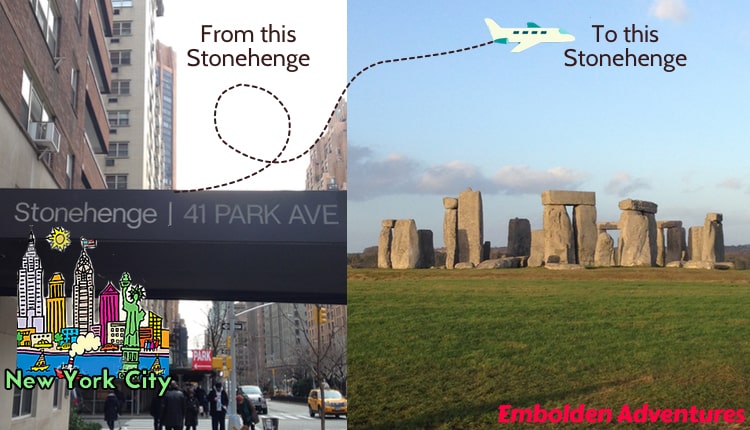
And the day I traveled to Stonehenge, it felt as if the tides parted for my arrival.
My United Kingdom itinerary had some built-in wiggle room for spontaneity. After spending some time in Cambridge, I had two open days in London before heading to Edinburgh. In those days, I could make time for Stonehenge.
The quaint British town of Amesbury near the city of Salisbury is home to Stonehenge. It is about 80 miles southwest of London. Getting to Stonehenge direct from London is fairly easy. Options include driving, taking a tour bus, or riding a train to a local tour bus.
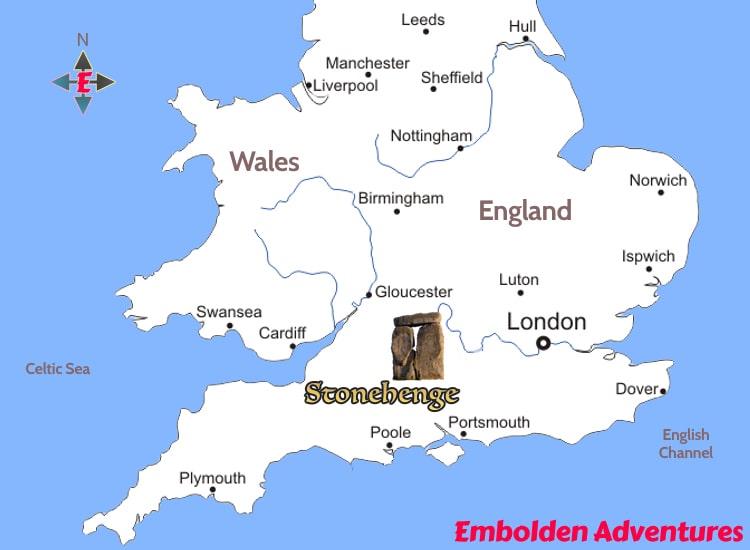
In London
When I landed in London, I learned of a possible underground tube strike hitting the city. Fortunately, I stayed in Cambridge for an extra day, avoiding the strike and its significant back-ups in the cold rain. Not only did the underground tube strike cause problems, the transit workers planned an above ground rail strike that same week causing more travel disruptions. This time I would be affected but not thwarted!
Instead of taking the train, I opted to take the tour bus leaving from central London. From where I was staying near London Bridge, I needed an hour, comfortably, to get to Victoria Coach Station. I walked from London Bridge to the tube, but first; I stopped for a quick sandwich. My hunch said not stay too long, so I changed my mind mid-order and took the sandwich to go.
Luckily, the tube train just pulled into the station as I arrived onto the platform. I just made the transfer train to Victoria Station too. At the Victoria Tube and Rail Station I realized that the Victoria Coach Station was not connected. To get to the bus station, I had to exit the tube station and walk outside along the high street. I started to get nervous as time was ticking. The walk actually took about a good 7 minutes or so. Fortunately, simple and temporary printed signs with arrows, perhaps due to some construction work in the area, led the way to the coach station. Or else, I would have gotten lost.
With that decision to take my sandwich to go, I made the tour bus with minutes to spare. Any one wrong move or slight delay in transit, Stonehenge would have not happened that day or any of the days I had to spare in London.
Getting to Stonehenge
Tour Bus
The tour bus leaves from the Victoria Coach Station located on Buckingham Palace Road. This bus depot is near the Victoria tube and rail station, a Circle, District, and Victoria line tube stop. Be warned though, the Coach Station is not linked directly to the Victoria tube or rail. Rather, it is about a 7 minute walk. Exit the tube station and walk along the high street for a few blocks to the coach station.
The bus ride is about 2-and-a-half hours to Stonehenge. The tour company provides a self-guided, audio tour device and allows about 3 hours to explore the area before heading back to London. This option with the entry fee to Stonehenge costs about £47.00.
Train to the Local Tour Bus
Another option that provides more flexibility is taking the above ground rail from Waterloo Station direct to Salisbury. Trains leave frequently and take about an hour and a half to reach the town. From the Salisbury train station, jump on the local tour bus tour to Stonehenge. This bus is a “hop on, hop off” tour that also operates frequently. Stonehenge is about a half hour drive from Salisbury. Including the round trip train ticket, the bus, and the entry with an audio guide tour, the total cost is about £60.00.
Drive
Renting a car to drive to Stonehenge is another option as well.
Because of the way the transit strikes worked out, I traveled to Stonehenge on January 11 rather than January 10. A large, bright full moon appeared that evening of January 11 upon my departure from Stonehenge. It is also 1-11. Numerologists say that repeating numbers tend to have meaning. In the case of 111, it is a time of awakening. It could be a sign to pay attention. Or it could be a validation for being on the right track and for persevering without fear.
For me that evening when I returned to London, it was a sign of progress and good fortune. Finally I had wifi so I accessed my emails of the day. At that time, I saw three independent emails from some budding prospects. These emails turned into very promising, actionable developments for me after an extended period of drought and disappointments.
More so, the “111” suggests an alignment with some universal energy according to New Age theory. Perhaps Stonehenge is the same: An alignment to some electromagnetic energy point of the Earth? It was spiritual destination like many other ancient places around the world such as Easter Island, Machu Picchu and Sedona Arizona.
What I find so coincidental is that one of my very favorite friends Alice just happened to be visiting Machu Picchu this same day. Also a friend from childhood who I have been keeping in touch with was at the energy vortexes of Sedona at the same time. All of these little signs together remind me of this enigma of having come to Stonehenge in the first place.
“The most beautiful and profound emotion we can experience is the sensation of the mystical “
~Albert Einstein
Deciphering Stonehenge: Who Done It?
Perched atop a rolling green hill peppered with grazing sheep, Stonehenge stands unassuming along the side of a highway. It is an iconic, ancient site visited by 1 million people each year. Stonehenge received one of the first UNESCO World Heritage Site designations in Britain. It even got a shout out in the 1980s comedy film, This is Spinal Tap. But really, what is it?
Stonehenge is a mysterious place with mysterious origins. It is a megalithic monument: A prehistoric structure made of stone and without any mortar. Massive stones weighing between 5 to 50 tons each make up the site. These stones are erected into concentric circles and horseshoe formations and align with the sun. Some of these stones came from southwest Wales located over 175 miles away. That area today is near a town called Maenclochog, a name that translates to “stone bells”. These particular rocks have an unusual acoustic property when hit – they ring. As a result, some speculate Stonehenge was built as a place of healing using these sound vibrations.
Who built it?
Who actually built Stonehenge is still anyone’s guess. Legend says that a giant built Stonehenge for Merlin, the mythical wizard of Welsh folklore. Others believed that Druid priests from 4th Century BC Celtic times made it for rituals. Still others figured the Romans constructed it during the time of Christ.
However, Stonehenge is over 4500 years old, so none of these theories ring true. It is as old as the the Great Pyramids of ancient Egypt. The site is 2000 years older than the Parthenon in ancient Greece and 3000 years older than the Colosseum in Rome. In comparison, the Polynesians built Easter Island in 1000AD and the Inca built Machu Picchu in 1500AD (although some speculate that the Inca built Machu Picchu on top of an already existing, much older site.)
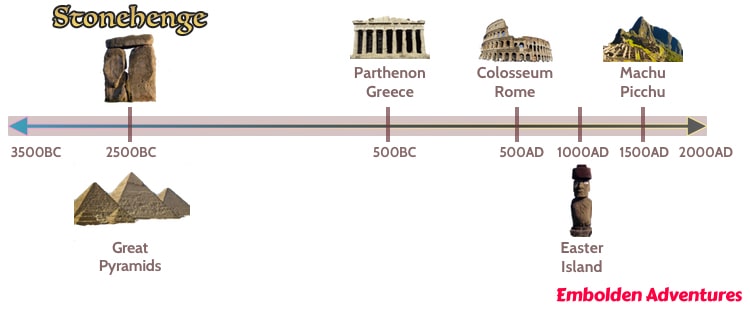
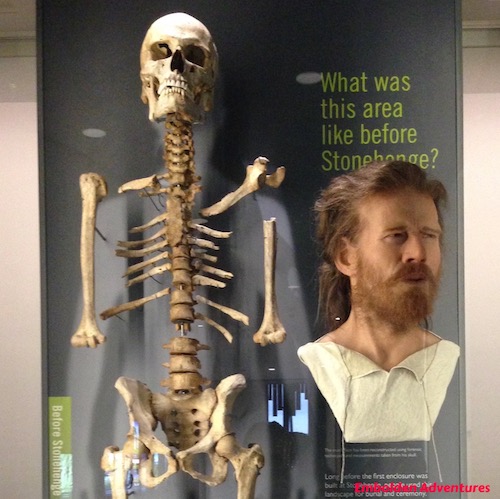
Stonehenge Is Made with Legos?
These stone circles were part of a larger phenomenon happening at that time until about 1500BC. Over 1300 stone circles in Britain and Ireland alone still exist. Avebury near Wiltshire, 30 miles north of Stonehenge, has the largest stone circle formation in all of Europe. Some other ancient stone circle examples are found in Scandinavia, West Africa, Hong Kong, Israel, Pakistan, Japan, and even the United States in Massachusetts.
Although technically Stonehenge is a stone henge and not a stone circle. A henge is an enclosure with a sunken ditch as the inner area of the circle.
In 3000BC, Stonehenge began as a large circular enclosure lined with 56 upright pillars either made of timber or stone. Around and within the pillars are cremated human remains. For 500 years it stayed a circular enclosure. Then around 2500BC, the ancient people began to erect the large stones.
Stonehenge has two types of stones: Huge sandstone boulders and smaller bluestones. These sandstone boulders are shaped into rectangles known as sarsen stone. The sarsen stones, weighing up to 50 tons each, came from North Wiltshire near Avebury. On the other hand, the bluestones weighing about 5 to 10 tons, originated from Wales.
And so how did these heavy stones travel such long distances? Hundreds of people together may have dragged these stones on timber sledges with rollers and ropes. Possibly they used small stones the size of softballs, acting like ball bearings within wooden tracks, to move the boulders more easily. Or the boulders themselves may have moved naturally by glaciers and deposited in areas closer to the Stonehenge site. Then the boulders were transported just a shorter distance to Stonehenge. This theory is less likely however.
To erect the stones, the builders probably used ropes, a wooden A-frame, and weights together in a lever-like contraption. Then over the next 300 years, the builders continued to arrange and rearrange the stones.
The larger sarsen stones created two concentric formations – an inner horseshoe and an outer circle. Between the sarsen stones, the bluestones were interlaced in a double arc formation.
This inner horseshoe had five of these stone structures called “trilithons” each made out of three large stones. Two large rectangle stones standing upright supported a third stone called a “lintel”. The lintel stone was laid horizontally over the top of the upright stones. For more of a dramatic effect, some of the bluestones also may have been fitted into the large trilithon structures.
A continuous circle of joined stones formed the outer circle. To create this effect, flat lintel stones across the top linked together the 30 upright sarsen stones.
Notably, these stone builders used sophisticated construction techniques. They used interlocking joints sort of like Legos and woodworking touches. The lintel stones had concave carvings that “snap” like Lego blocks into carved nobs on the tops of the erected stones. Also, the edges of the lintel stones linked together in a “tongue and groove” jointing. This work is unlike the work found in megalithic prehistoric monuments.
More notably, many believe that Stonehenge is the only surviving and the most architecturally sophisticated lintelled stone circle in the world.
Three hundred years later in 2200BC, these ancient people added an earthen pathway leading up to Stonehenge. Known today as “Stonehenge Avenue”, the pathway is about 2 miles (3 kilometers) long and 90 feet (30 meters) wide. It links Stonehenge with the River Avon. Along the pathway lie other stone circles such as Woodhenge and West Amesbury Henge or Bluestonehenge recently discovered in 2008.
Archaeologists excavated just half of the greater area of Stonehenge, and so more waits to be discovered.
During this time, outer areas of Stonehenge were being built including some of the largest concentrations of individual burial mounds such as Barrow Cemetery nearby. The Durrington Walls Settlements are located two miles from the Stonehenge. These dwellings had up to 1000 huts and 4000 people living there around 2500BC. At the time, it may have been the largest village in all of Northern Europe.
A Stonehenge Sunset, A New York Sunset
Interestingly, Stonehenge Avenue aligns with the sunrise of the Summer Solstice on June 21. This day is the longest day and the shortest night of the year.
More so, the center of Great Trilithon stones align with the sunset of the Winter Solstice on December 22. This day is the shortest day and longest night of the year. The Great Trilithon is a triad of sarsen stones at the apex of the horseshoe formation. Two of these stones have fallen, and underneath them lays some sort of altar stone archaeologists believe.
The importance of the solstices is to mark the respective beginnings of summer or winter. In the case of the winter solstice, deep winter was starting and the new year approached. People of the time slaughtered cows and fermented the wine and beer to prepare for an upcoming period of scarcity.
And like the alignment of the sun at Stonehenge, a similar phenomenon happens in New York City. Again, it is the New York City and Stonehenge connection! Called Manhattanhenge, the sunset aligns with the east-west direction of the street grid in Manhattan. This phenomenon happens on approximately May 28 and July 12 each year. The sun positions perfectly between the center of the skyscrapers along the streets. I took this photo of the Manhattanhenge sunset on July 11, 2016 in front of my apartment on 57th Street. Coincidentally enough, this Manhattanhenge sunset was exactly 6 months before I went to Stonehenge on January 11, 2017. Yet another foreshadowing sign of what was to come: Traveling to Stonehenge. Also on this same day of Manhattanhenge, I experience many interesting synchronistic developments, and then I found a small bruise in the shape of a heart on my arm.
And look at that! A Stonehenge apartment building is literally across the street to where I live. Just recently upon my return to New York, I realized the name of this apartment, hence the snow from a recent blizzard. Scaffolding hid this apartment building for nearly 3 years until it was removed only a few months ago. Coincidentally near this spot on this side of the street, I watched Manhattanhenge in July.
After finally arriving to Stonehenge from London, naturally I became excited.
Three hours is sufficient time to explore the grounds and its indoor museum. They have a gift shop and café on the premises. Outside of the museum, replicas of old settlement huts from 2500BC stand on display. Shuttle buses leaving about every 5 minutes to the Stonehenge site wait nearby.
Modern day Druids from near and far come to Stonehenge to celebrate the solstices. Approaching the stone henge up ahead, I even felt a bit like a Druid myself.
However, its condition surprised me when I first saw the sight in person. Stonehenge seemed much smaller than I envisioned. And after 4500 years of exposure to the elements, these rocks looked tired. The earliest modern account of Stonehenge was in 1740. By then, boulders had fallen or were removed for building materials. The first restoration project began in 1900 after a sarsen stone fell. In 1919, restoration crews set the tallest of the stones upright. In the 10-year period from 1954 and 1964, 20 more stones were re-erected and a few set in concrete.
Because of the unstable ground, tourists can approach the stones only from a certain distance. No one can be inside the circle.
The cold wind was blowing strongly and relentlessly at that point. Cloudy skies added to the dreariness. What a let down it seemed! Given the limited time I had, I tried my best to immerse myself in the experience. I made a point to walk around the circle, passing the road in the distance and the sheep in the field.
Then the sun came out, and the situation turned for the better. Colors from the green grass and the rocks began to pop. The environment around perked up. The wind continued to blow nevertheless, chilling my fingers and draining my cellphone battery. Twice my phone shut off due to the cold wind.
But this experience opened my eyes about how to prepare for our climb up Mount Kilimanjaro in September. Read all about the events leading up to this adventure here. Clearly my electronic batteries will not stand a chance over 8 days of hiking in harsh, cold environments unless I recharge them frequently. So lesson learned now, thankfully. I will have to think what to do. Perhaps I will need to pack extra charged batteries or bring a solar charger and definitely will not rely on the iPhone over 8 days.
Rounding the circle back to the staring point, I looked toward the large trilithon stones. A bird perched itself neatly on top of the center sarsen stone. The sun started to set behind Stonehenge, moving across the stones. Then the sun shone its light through the space between the sarsen stones. This moment was my very own solstice experience. Once and for all, I felt connected to this mysterious place. Why I was drawn here still remains a question mark. Maybe one day the answer will reveal itself.
PS – Other Points of Interest Nearby
Salisbury: Check out the quaint town of Salisbury. The Salisbury Cathedral just celebrated its 800-year old birthday in 2015. The medieval cathedral was built in the early English Gothic. It boasts the tallest church spire of all of England at 404 feet, but due to its height, the spire and its tower add the pressure of 6400 tons to its structure. The cathedral also has the oldest working modern clock, first installed in 1386.
One of the best-preserved copies of the Magna Carta from 1215 is on display inside the cathedral. Only four copies of it remain. The Magna Carta is the “Great Charter of Liberties” enacted by King John of England. This charter placed the King under the rule of law for the first time. It protected church rights, safeguarded those from illegal imprisonment, and underscored swift justice. In addition, the Magna Carta provided inspiration to the Founding Fathers of the United States in creating the Bill of Rights and the Constitution.
The Magna Carta famously states “No free man shall be taken or imprisoned, or dispossessed or outlawed or exiled or in any way ruined, nor will we go or send against him except by the lawful judgment of his peers or by the law of the land.”
Old Sarum: After a visit to Salisbury, head 4 miles north to the town’s original settlement, Old Sarum. The people of Old Sarum relocated to Salisbury in the mid 12th Century after drought and infighting. Prehistoric settlers during the Iron Age called Old Sarum home as early as 500BC, followed by the Romans, Saxons, and Normans. The main attractions there are ruins from an old fort and the Sarum Royal Castle.
Amesbury: Head back to Amesbury where Stonehenge is located. Archaeologists uncovered the grave of the Amesbury Archer, also dubbed the “King of Stonehenge”, who died around 2300BC. He may have been one of the earliest metalworkers in Britain. Many arrowheads and metal artefacts were in his grave, hence the “archer” name. Tour it and this old fashioned town.
Bath: Further on is the old Roman town of Bath. Located about 40 miles northwest of Salisbury it is an hour by car or an hour and a half by train. Bath is a popular tourist destination because of its ancient Roman baths fed by natural hot springs.
Until Next Time Adventurers!


